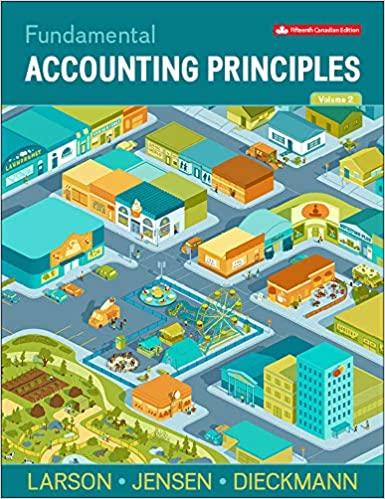Question
Supreme Videos, Inc., produces short musical videos for sale to retail outlets. The companys balance sheet accounts as of January 1, are given below. Supreme
Supreme Videos, Inc., produces short musical videos for sale to retail outlets. The companys balance sheet accounts as of January 1, are given below.
| Supreme Videos, Inc. Balance Sheet January 1 | |||||
| Assets | |||||
| Current assets: | |||||
| Cash | $ | 75,000 | |||
| Accounts receivable | 114,000 | ||||
| Inventories: | |||||
| Raw materials (film, costumes) | $ | 42,000 | |||
| Videos in process | 20,000 | ||||
| Finished videos awaiting sale | 93,000 | 155,000 | |||
| Prepaid insurance | 11,400 | ||||
| Total current assets | 355,400 | ||||
| Studio and equipment | 754,000 | ||||
| Less accumulated depreciation | 222,000 | 532,000 | |||
| Total assets | $ | 887,400 | |||
| Liabilities and Stockholders' Equity | |||||
| Accounts payable | $ | 104,400 | |||
| Capital stock | $ | 501,000 | |||
| Retained earnings | 282,000 | 783,000 | |||
| Total liabilities and stockholders' equity | $ | 887,400 | |||
Because the videos differ in length and in complexity of production, the company uses a job-order costing system to determine the cost of each video produced. Studio (manufacturing) overhead is charged to videos on the basis of camera-hours of activity. The companys predetermined overhead rate for the year is based on a cost formula that estimated $360,000 in manufacturing overhead for an estimated allocation base of 9,000 camera-hours. The following transactions occurred during the year:
- Film, costumes, and similar raw materials purchased on account, $197,000.
- Film, costumes, and other raw materials used in production, $212,000 (85% of this material was considered direct to the videos in production, and the other 15% was considered indirect).
- Utility costs incurred in the production studio, $84,000.
- Depreciation recorded on the studio, cameras, and other equipment, $96,000. Three-fourths of this depreciation related to production of the videos, and the remainder related to equipment used in marketing and administration.
- Advertising expense incurred on account, $142,000.
- Costs for salaries and wages were incurred as follows:
| Direct labor (actors and directors) | $ | 94,000 |
| Indirect labor (carpenters to build sets, costume designers, and so forth) | $ | 122,000 |
| Administrative salaries | $ | 107,000 |
- Prepaid insurance expired during the year, $8,200 (80% related to production of videos, and 20% related to marketing and administrative activities).
- Miscellaneous marketing and administrative expenses incurred, $9,800.
- Studio (manufacturing) overhead was applied to videos in production. The company used 9,100 camera-hours during the year.
- Videos that cost $562,000 to produce according to their job cost sheets were transferred to the finished videos warehouse to await sale and shipment.
- Sales for the year totaled $949,000 and were all on account. The total cost to produce these videos according to their job cost sheets was $612,000.
- Collections from customers during the year totaled $862,000.
- Payments to suppliers on account during the year, $512,000; payments to employees for salaries and wages, $303,000.
Required:
1. Prepare a T-account for each account on the companys balance sheet and enter the beginning balances.
2. Record the transactions directly into the T-accounts. Key your entries to the letters (a) through (m) above.
3. Is the Studio (manufacturing) Overhead account underapplied or overapplied for the year? By how much?
4. Prepare a schedule of cost of goods manufactured.
5. Prepare a schedule of cost of goods sold.
6. Prepare an income statement for the year.
Step by Step Solution
There are 3 Steps involved in it
Step: 1

Get Instant Access to Expert-Tailored Solutions
See step-by-step solutions with expert insights and AI powered tools for academic success
Step: 2

Step: 3

Ace Your Homework with AI
Get the answers you need in no time with our AI-driven, step-by-step assistance
Get Started


